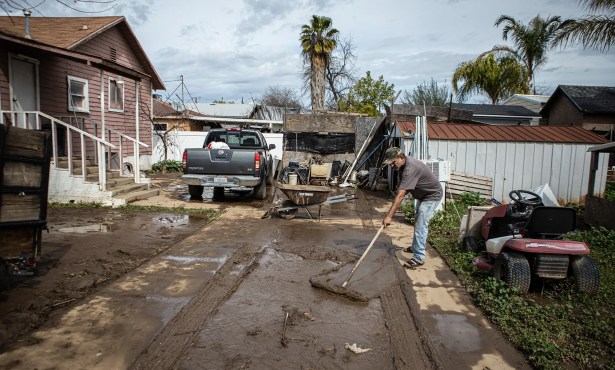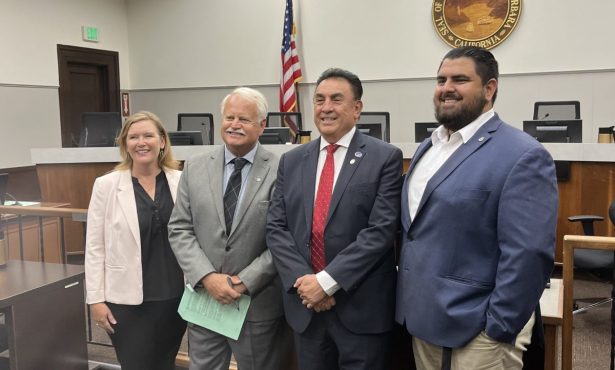How Many Santa Barbara Jail Inmates Picked Up by ICE?
Sheriff Brown Reported to Supes, but Advocates Questioned His Numbers

In the past year, federal agents with U.S. Immigration and Customs Enforcement — better known as ICE — picked up 12 inmates from Santa Barbara County Jail for purposes of deportation. That’s out of a total of 132 inmates deemed by custody officers in the County Jail of having committed crimes serious enough to meet the threshold established by the State Legislature to justify pickups. In 2019, the number of ICE pickups was 38 out of 448 requests. The year before that, it was 98 pickups out of 414 requests.
These numbers were delivered by Sheriff Bill Brown as part of annual reporting required by the State of California since 2014. Three measures — the Trust Act, the TRUTH (Transparent Review of Unjust Transfers and Holds) Act, and the Vision Act — were designed to publicly disclose any collaboration between local law enforcement officials and ICE.
Advocates argued that since ICE generated intense fear in immigrant communities, it also engendered distrust of local law enforcement agencies, which hindered public safety. Families have been torn asunder, they argued, by deporting individuals for minor offenses. And in the wake of COVID, they’ve added, fear of ICE has discouraged many immigrants from getting vaccinated or obtaining the medical treatment they need, thus placing themselves and the broader community at greater risk.
When Sheriff Bill Brown first ran for sheriff 14 years ago, he made many of the same points, arguing that the incumbent — sheriff Jim Anderson — had alienated the trust of the county’s immigrant community by working with federal immigration. But that was a long time ago and this Tuesday, Brown found himself on the hot seat — yet again — as immigration rights advocates and social-justice warriors cast doubt not just on his numbers but on his commitment to the required public transparency. They urged the county supervisors to endorse a new California bill — known as the Values Act — which would prohibit any form of collaboration between ICE and local law enforcement agencies.
The way it works, county jail officials send names and fingerprints of everyone booked to the federal government. ICE then gets a list of immigrant inmates and notifies the county which ones it would like to pick up. County jailers then screen this list to see which of these inmates are facing charges deemed serious enough to pass muster with the State Legislation. Custody officials then notify ICE, via fax, when these inmates are scheduled for release.
Of the 14 speakers who addressed the board, all expressed concern about what they called the “two-tiered system of justice” in which immigrants in Santa Barbara County face the “double jeopardy” that comes with being punished twice for committing the same crime. But the two supervisors representing the county’s northern-most districts — Steve Lavagnino and Bob Nelson — expressed more alarm about the crimes committed and the length of the rap sheets of those committing them.
Brown presented a one-page description detailing the charges leveled against the 12 inmates picked up by ICE and their respective numbers of prior offenses. Brown stressed all had committed “serious crimes,” either felonies or “high grade misdemeanors,” such as “false imprisonment, spousal battery, drunk driving, criminal threats, and possession of drug paraphernalia.” One had been booked into County Jail 28 times, another 21 times, another 18.
Supervisors Gregg Hart and Das Williams — more distrustful of Brown — wanted more data to be sure inmates were not being turned over to ICE agent for relatively rinky-dink crimes. Supervisors Lavagnino and Nelson asked about the rap sheets of the 43 inmates that ICE could have picked up but for some reason did not. Brown said he had a report six pages long. Supervisor Joan Hartmann asked whether County Jail officials ever extend the length of inmates’ sentences to accommodate the pick-up schedules of ICE agents. No, they did not, Brown told her. Hartmann was commended by many of the social-justice advocates for having supported the Values Act.
Many of the speakers accused Brown of presenting one set of numbers to the state Attorney General and another set of numbers — all zeroes — to a federal agency. Many called into his question his commitment to “transparency and accountability.”
Brown took issue with those who accused him of “conflating” his numbers, saying the only “conflating” was being done by those “who are saying we are saying one thing and doing another.” Supervisor Hart urged the sheriff to meet with the advocates and straighten the matter out.
Support the Santa Barbara Independent through a long-term or a single contribution.



